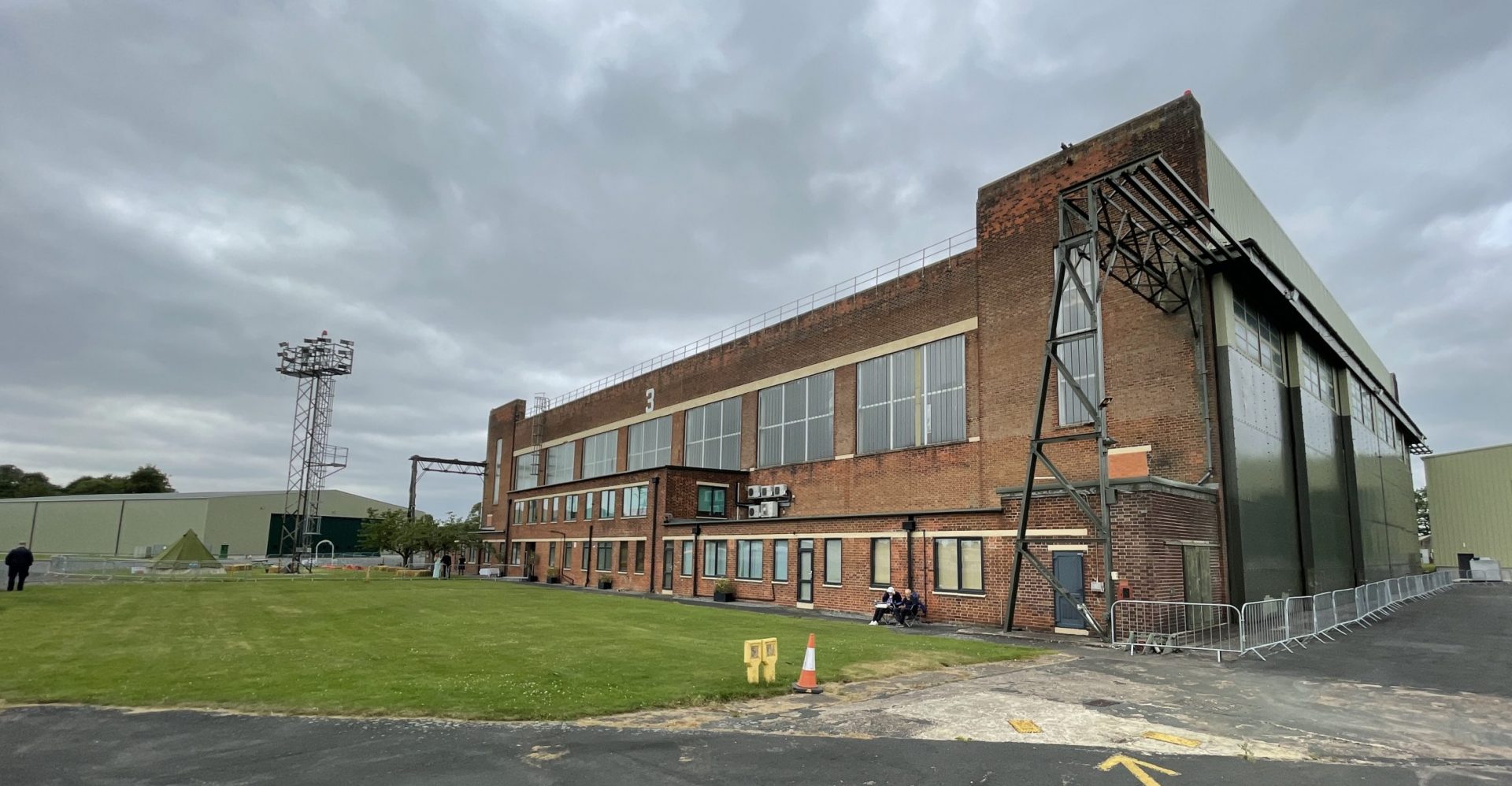Immediately post war, the station retained its role as a front-line fighter station in the defence of northern England. In April 1946, the station became one of the first in the country to operate jet aircraft, these were the Gloster Meteors of 263 Squadron, and later 257 Squadron.
April 1947 saw the arrival of 19 Squadron, at the time equipped with DH Hornets. 19 was to stay until the end of Church Fenton’s days as a fighter base some 12 years later. By November 1949, the station was home to no less than 5 Squadrons – one of Meteors, one of Hornets and three of Mosquitoes. In the following few years, as well as a T2 hangar being erected, all the squadrons on the base started to convert to Meteors, meaning that by 1951 there were no piston engine aircraft on the station (not counting station flight aircraft).


Pilots of 19 Squadron pose in front of one of their Hunters, circa 1957. 
Meteors, likely of 609 Squadron, pass low over the airfield boundary. © Derick Oakley
In 1953, runway 06-24 was re-surfaced and extended, so as to allow more room for the longer landing runs required by the new jet aircraft. A large concrete pan was also laid in front of the hangars.
For much of the 1950s, the station was home to no less than three jet fighter squadrons – 19, 72 and 609. As was usual at the time, the station was home to both day- and night-fighter squadrons.
19 Squadron was a day-fighter squadron, initially equipped with Meteors, but then converted to Hunters and flew these for the rest of its’ time at Church Fenton.
72 Squadron, however, soldiered on in its night-fighter role with Meteor 11s and 14s, before converting to the glamour of Javelins in April 1959, shortly before the base changed role.
85 Squadron, another night-fighter Meteor Squadron, was also present at Church Fenton during the 1950s. 85 had also called Church Fenton their home during World War 2, during which time Gp Capt Peter Townsend was a Hurricane pilot on the squadron.

609 was the West Riding’s Royal Auxiliary Air Force squadron, which arrived in 1950, initially equipped with Spitfire XVIs, then converting onto Vampires for a short time (all of 2 months!), before finally moving onto Meteor 4s. 609 carried on flying Meteors until it was disbanded on 11th January 1957, due to the disbandment of all Auxiliary squadrons. It was re-formed at RAF Leeming in 1999, although not in a flying role.
In July 1959, the station ceased being a front line home defence station, and its role changed to that of pilot training, one which it carried out to the end of its time as an RAF station.

